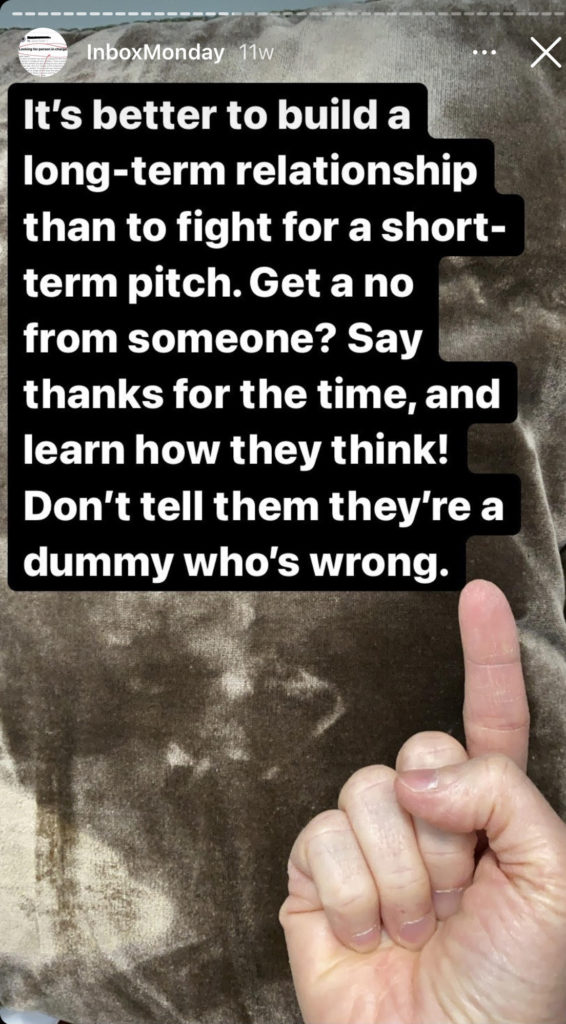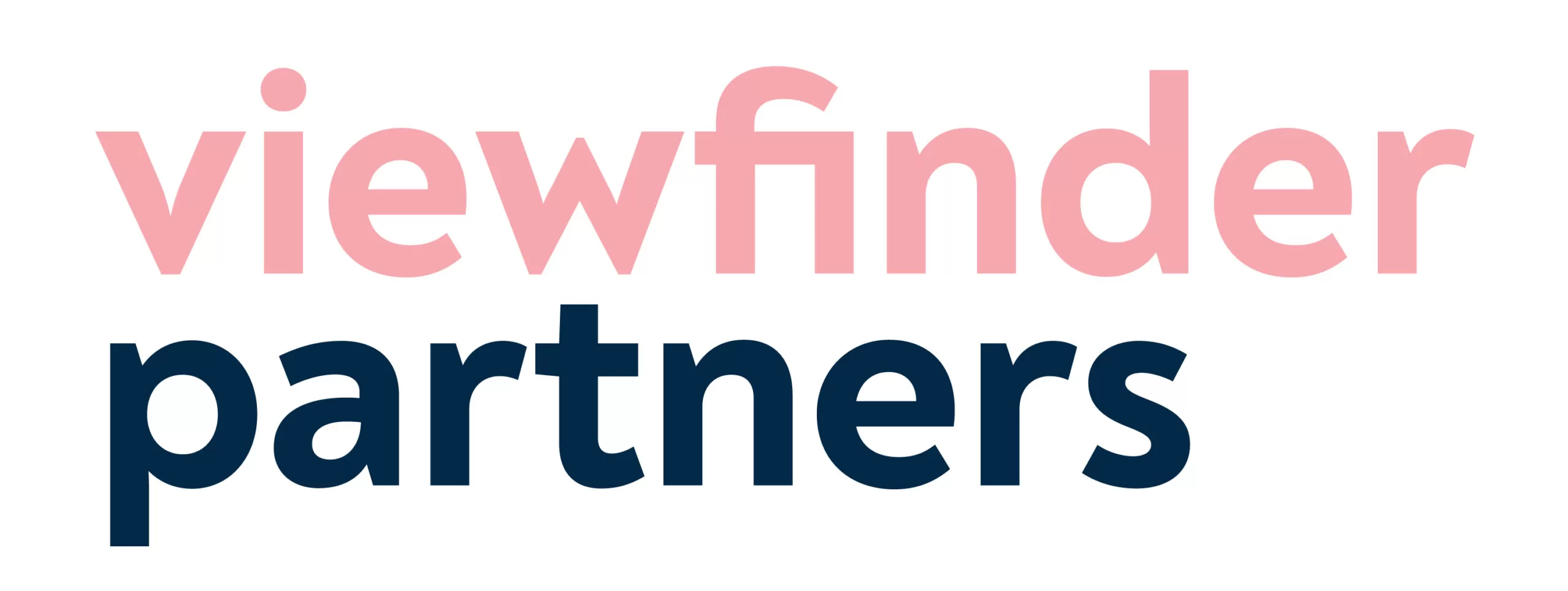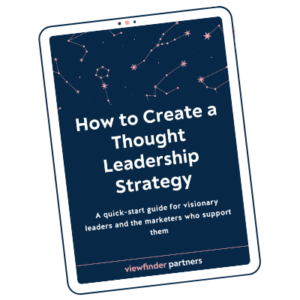Need some inspiration?
I think of myself as an idea collector, and one thing that always inspires me is finding and celebrating other people’s good work and new ideas.
So, here are three examples of thought leadership that have impressed me lately.
I think about thought leaders in three categories:
-
Beacons (who lead by example).
-
Curators (who unite people around community and ideas).
-
Challengers (who introduce us to new ways to look at the world).
1. Beacon: Jason Feifer, Editor-in-Chief of Entrepreneur
I’ve been following Jason on Instagram for a while, and I’m always struck by how generously he teaches. As the editorial leader of a major business publication, he gets absolutely bombarded with pitches — most of them very bad. But instead of taking to the internet and complaining (which, let’s be honest, is the most natural knee-jerk reaction), he shows people how to get better.
I wish I could link the recent example that I learned from, but it was an Instagram story that’s gone now. He walked through a successful pitch he sent to a local newspaper editor promoting his podcast. His takeaways: do your research, think about what the other person needs, get specific, and be nice. You can see some of his saved pitching advice here.

I highly recommend following Jason for seriously nice advice and a peek into what it’s like to remotely lead an editorial team.
2. Curator: Diversity on the Dais, created by Luis Antezana
Sometimes the most helpful curators help us find new people in addition to new ideas.
Luis wanted to help event organizers break out of their echo chambers and put more diverse voices on conference stages. So he started a central list of panelists and speakers from diverse backgrounds. (Flag this list — Luis says it will be growing soon.)
He says: “I keep seeing creative and tech events lacking in adequate diversity, and keep hearing the same excuse, that the organizers can’t find anyone else, or worse, didn’t even try. When conversations continue to include the same people, change comes too slowly, if at all.
Anti-racism requires an active effort to do better by doing things differently.
Diversity on the Dais is my contribution to help that effort.”
3. Challenger: “The SEO Delusion” manifesto from Scribewise, a “brand dialogue agency,” created by Cassie Drumm and team.
Challengers are my favorite kind of thought leader. They have big, bold ideas. They have something to say. They want to shake things up. And they know they might bruise a few egos along the way.
But writing “challenger” content is extremely… challenging. It’s a delicate tightrope to walk — saying something groundbreaking while also bringing people along with you, not excluding or ostracizing them.
“The SEO Delusion” is a beautiful example of challenger content done well. The writing is masterful (convincing, funny, thought-provoking, easy to understand) and the design of this interactive content piece is impressive. It’s worth entering your email address to read the full manifesto.
My favorite part in this takedown of traditional SEO strategies: “When you focus your marketing program around luring people to your website with keywords the entire internet is searching for, you are attracting takers — people who come to your website for one little nugget of knowledge or some clickbait headline, take what they want, and then leave. Do they ever become customers? Don’t hold your breath.
“Your parents were right: You don’t need to be Most Popular; you need to have some loyal friends.”

What is inspiring you lately? Has someone helped you find a new perspective or a new idea? I’d love to hear.







